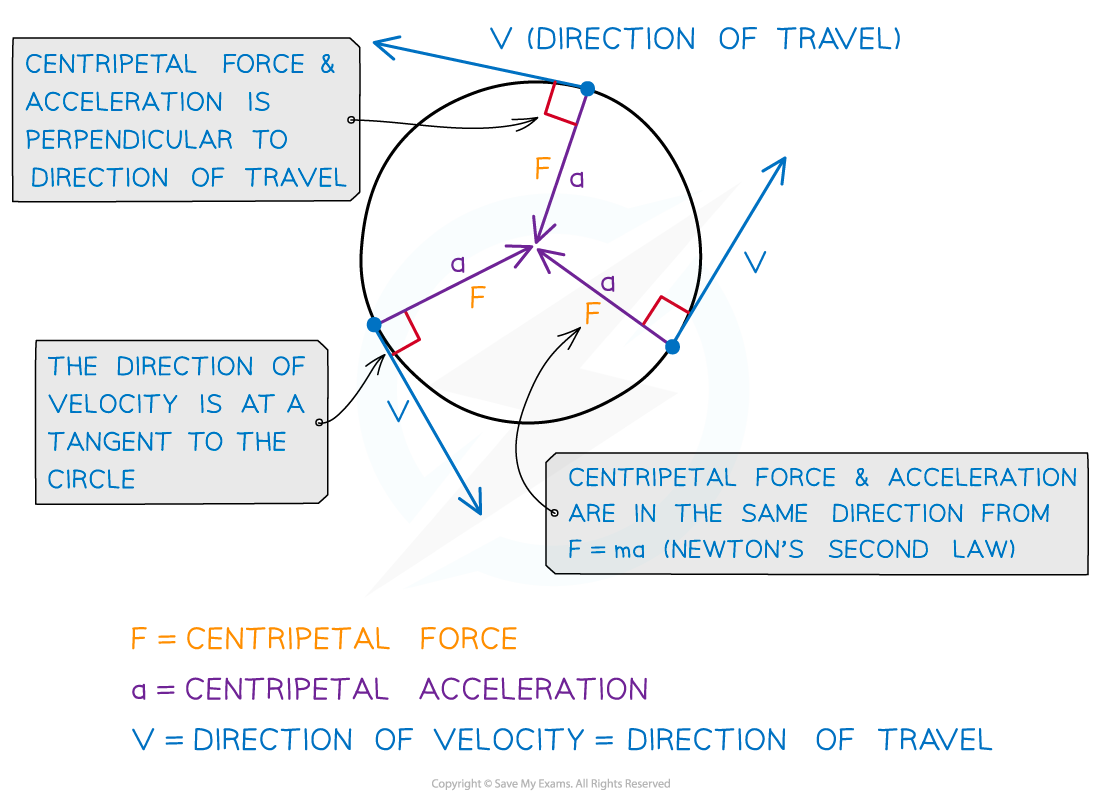Circular Motion (AQA A Level Physics) : Revision Note
Circular Motion
Velocity and acceleration are both vector quantities
An object in uniform circular motion has a constant linear speed
However, it is continuously changing direction. Since velocity is the speed in a given direction, it, therefore, has a constantly changing velocity
The object therefore must be accelerating
This is because acceleration is defined as the rate of change of velocity
This acceleration is called the centripetal acceleration and is perpendicular to the direction of the linear speed
Centripetal means it acts towards the centre of the circular path

Centripetal force and acceleration are always directed towards the centre of the circle
The centripetal acceleration is caused by a centripetal force of constant magnitude that also acts perpendicular to the direction of motion (towards the centre)
This is a result of Newton's Second Law
Therefore, the centripetal acceleration and force act in the same direction
Examiner Tips and Tricks
The linear speed is sometimes referred to as the ‘tangential’ speed
A tangent is a straight line which touches a circle or curve at exactly one point
The key feature of a tangent of a circle is that it always acts perpendicular to its radius
You can find out more in the A Level Maths revision notes on Tangents

You've read 0 of your 5 free revision notes this week
Sign up now. It’s free!
Did this page help you?
